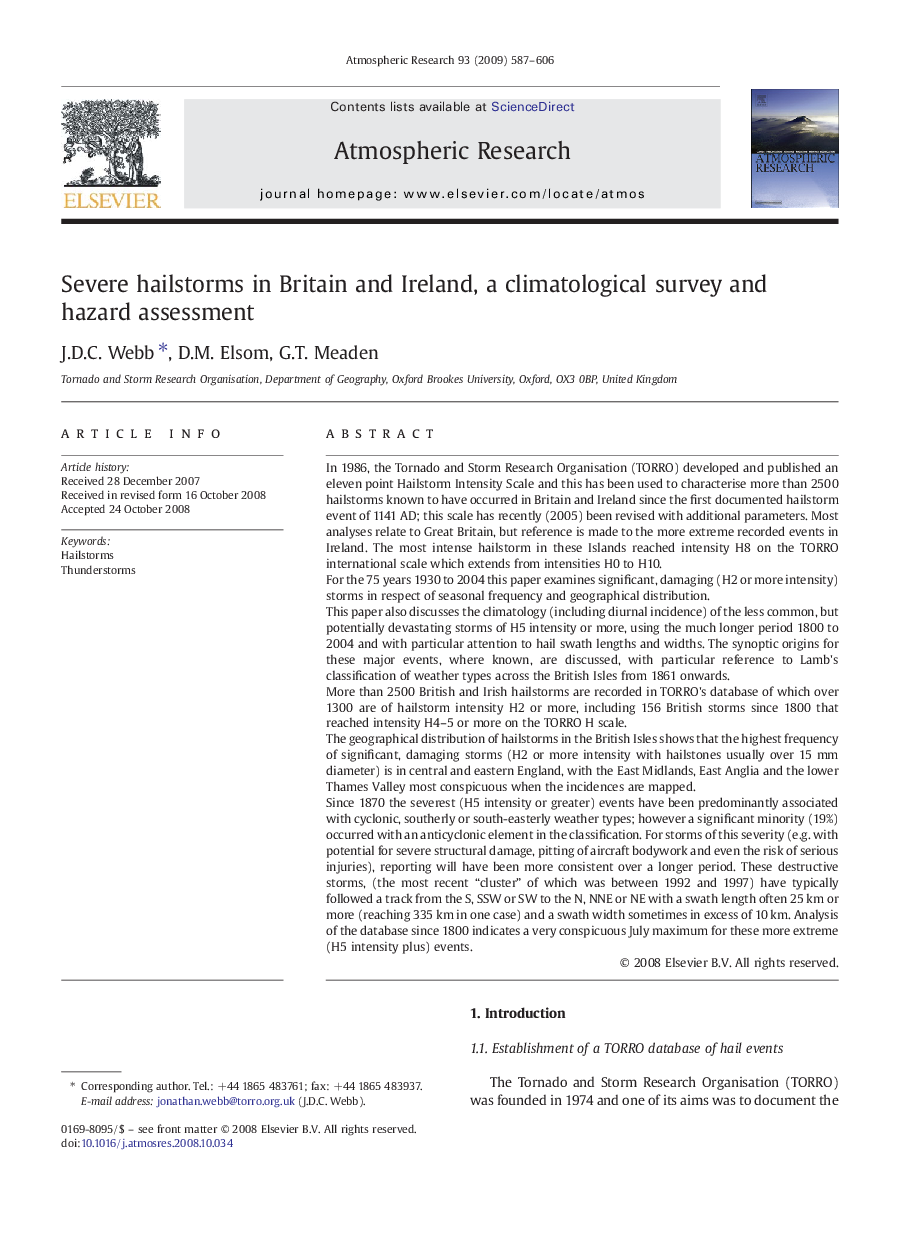| کد مقاله | کد نشریه | سال انتشار | مقاله انگلیسی | نسخه تمام متن |
|---|---|---|---|---|
| 4450752 | 1620569 | 2009 | 20 صفحه PDF | دانلود رایگان |

In 1986, the Tornado and Storm Research Organisation (TORRO) developed and published an eleven point Hailstorm Intensity Scale and this has been used to characterise more than 2500 hailstorms known to have occurred in Britain and Ireland since the first documented hailstorm event of 1141 AD; this scale has recently (2005) been revised with additional parameters. Most analyses relate to Great Britain, but reference is made to the more extreme recorded events in Ireland. The most intense hailstorm in these Islands reached intensity H8 on the TORRO international scale which extends from intensities H0 to H10.For the 75 years 1930 to 2004 this paper examines significant, damaging (H2 or more intensity) storms in respect of seasonal frequency and geographical distribution.This paper also discusses the climatology (including diurnal incidence) of the less common, but potentially devastating storms of H5 intensity or more, using the much longer period 1800 to 2004 and with particular attention to hail swath lengths and widths. The synoptic origins for these major events, where known, are discussed, with particular reference to Lamb's classification of weather types across the British Isles from 1861 onwards.More than 2500 British and Irish hailstorms are recorded in TORRO's database of which over 1300 are of hailstorm intensity H2 or more, including 156 British storms since 1800 that reached intensity H4–5 or more on the TORRO H scale.The geographical distribution of hailstorms in the British Isles shows that the highest frequency of significant, damaging storms (H2 or more intensity with hailstones usually over 15 mm diameter) is in central and eastern England, with the East Midlands, East Anglia and the lower Thames Valley most conspicuous when the incidences are mapped.Since 1870 the severest (H5 intensity or greater) events have been predominantly associated with cyclonic, southerly or south-easterly weather types; however a significant minority (19%) occurred with an anticyclonic element in the classification. For storms of this severity (e.g. with potential for severe structural damage, pitting of aircraft bodywork and even the risk of serious injuries), reporting will have been more consistent over a longer period. These destructive storms, (the most recent “cluster” of which was between 1992 and 1997) have typically followed a track from the S, SSW or SW to the N, NNE or NE with a swath length often 25 km or more (reaching 335 km in one case) and a swath width sometimes in excess of 10 km. Analysis of the database since 1800 indicates a very conspicuous July maximum for these more extreme (H5 intensity plus) events.
Journal: Atmospheric Research - Volume 93, Issues 1–3, July 2009, Pages 587–606